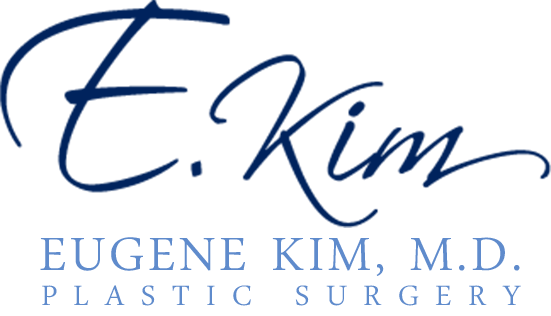The placement of your breast implants will affect both the final appearance of your breasts and the potential for complications such as bottoming out and the double-bubble effect.
Although the risks for bottoming out and the double-bubble effect are rare, they require revision surgery to correct. Los Angeles plastic surgeon Dr. Eugene Kim will discuss bottoming out and double-bubble as well as other potential complications of breast augmentation with you during your consultation.
Bottoming Out
Bottoming out is when the final placement of your breast implants is well below their initial placement. If your skin and underlying breast tissue at the breast crease separate, this can cause the breast implants to descend below the fold.
If your breast implants cross the inframammary crease, it causes your breasts to appear larger below the nipple and creates the appearance of bottoming out.
Bottoming out typically requires a revision procedure. The correction treatment varies based on the cause and extent of the condition.
Double-Bubble Effect
The double-bubble effect is the opposite of bottoming out. A double-bubble occurs when your breast tissue falls below your Inframammary fold and pushes your implant into the upper portion of your breast. This gives the appearance of two breasts.
Double-bubble occurs more often if subpectoral or full submuscular breast augmentation was performed without a breast lift. In double-bubble cases, the breast implants remain under the muscle and high on the chest wall with the naturally occurring breast tissue and breast envelope sagging lower than the breast implants.
As with bottoming out, the double-bubble effect requires revision surgery.
Click here see more plastic surgery procedures and treatments performed by Board Certified Plastic Surgeon, Dr. Eugene Kim on patients in Beverly Hills, Los Angeles, Hollywood, Santa Monica and surrounding areas or call 310-271-6996 to schedule a consultation.
